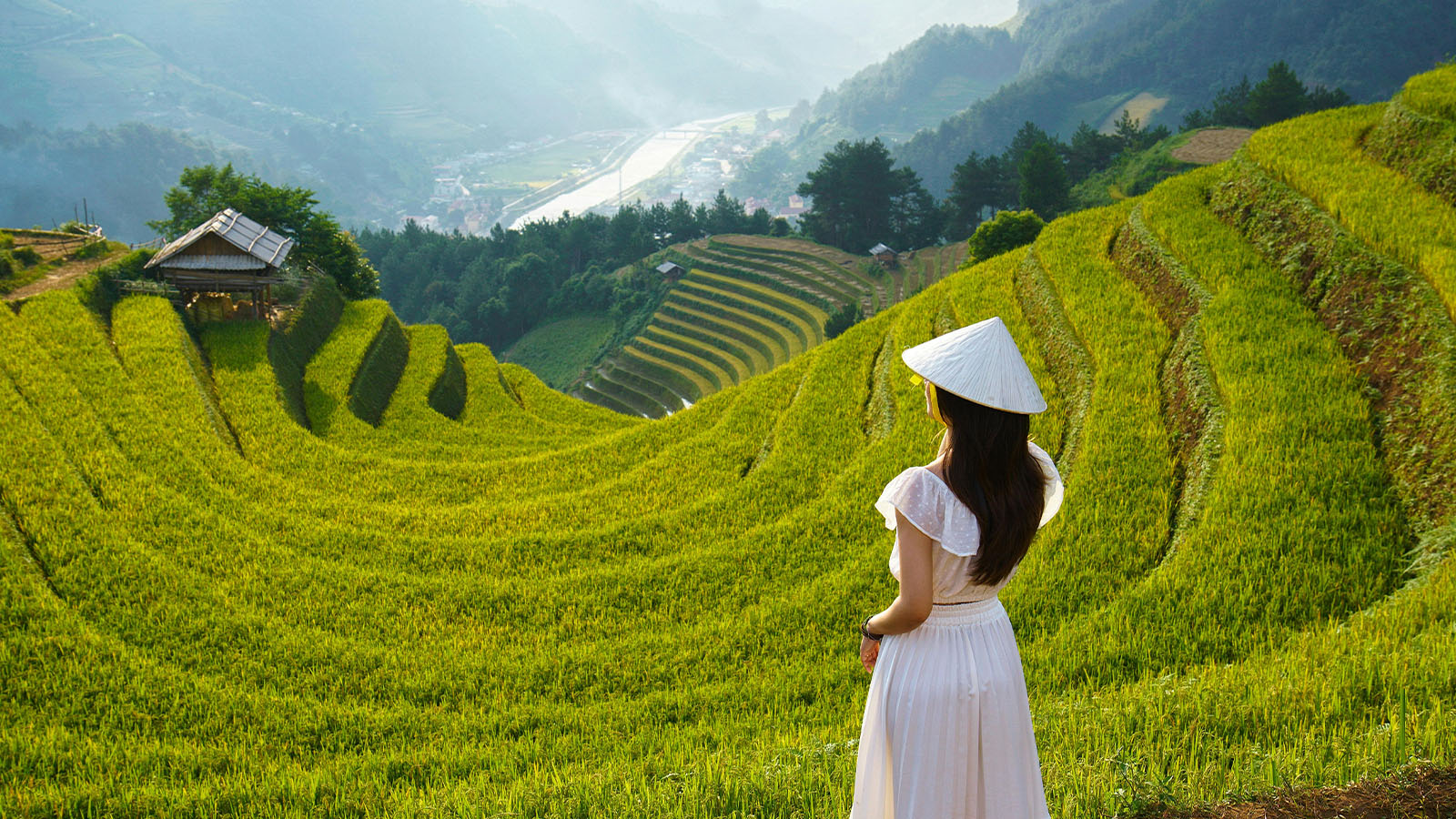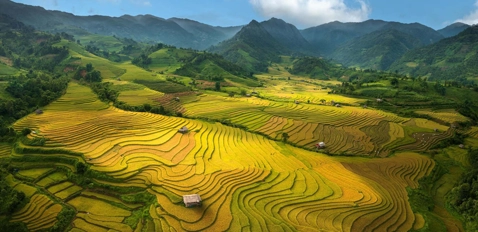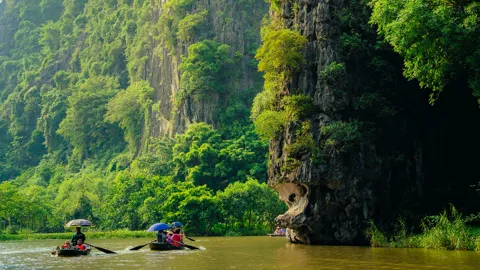Top 5 Unique Temples And Pagodas In The Mekong Delta
The Mekong Delta isn't just about lush landscapes and winding rivers; it's also home to some truly fascinating spiritual sites that blend history, culture, and stunning architecture. If you're planning a trip to the Mekong Delta, get ready to be wowed by some of the most unique and visually stunning pagodas and temples this region has to offer. Join me as we explore the top 5 must-visit temples and pagodas in the vibrant Mekong Delta. Trust me, you won't want to miss out on these gems!
Vinh Trang Pagoda, Tien Giang
Vinh Trang Pagoda is the largest Buddhist temple in Tien Giang. The pagoda began construction in the early 19th century by Mr. and Mrs. Bui Cong Dat. In 1894, Abbot Thich Hue Dang from Giac Lam Pagoda (Gia Dinh) took over and organized the construction of a grand pagoda, naming it “Vinh Truong” (Vinh Trang), meaning “to eternally stand against mountains and rivers, lasting as long as heaven and earth.”
Vinh Trang Pagoda is a fascinating mix of Asian and European elements. You’ll see traditional Vietnamese and Khmer designs intricately blended with French influences, which makes it stand out from your typical pagoda.
On the outside, the pagoda resembles a European-style building with slender columns and arches, Renaissance-style patterns, Roman-style arches, French scrollwork, and Japanese tiles. On the inside, however, the architecture is distinctly Vietnamese, with skillfully and intricately carved wooden plaques and statues, typical of Vietnamese and Khmer pagodas.
Vinh Trang pagoda is home to a giant reclining Buddha statue that’s 32 meters long, a standing Buddha, and a laughing Buddha. The pagoda is an active place of worship, so you’ll get to see monks going about their daily routines and maybe even join in some traditional ceremonies if you visit around 10 AM.
During the two wars against the French and the Americans, Vinh Trang Pagoda also served as a shelter and support base for revolutionary soldiers.
Bat Pagoda, Soc Trang
Bat Pagoda, also known as Mahatup Pagoda, is a Khmer monastery and home to thousands of fruit bats, making it one of the top 5 unique pagodas in the Mekong Delta. With over 400 years of history, Bat Pagoda is a significant religious symbol for the local community and a unique architectural marvel that embodies the rich culture of the Khmer people.
The name of the pagoda comes from the vast forest surrounding the pagoda, mainly consisting of resin trees, where tens of thousands of bats live. Every evening, these bats would flock to the pagoda. The monks believe that the bats' presence is a blessing from Buddha, and they actively protect these creatures. Despite being fruit eaters, the bats never consume the fruits in the pagoda's garden.
Bat Pagoda features traditional Khmer architecture. The main hall is constructed with brick and tiled roofs, with four curved corners intricately carved with images of Naga snakes. Surrounding the main hall are supporting columns, each adorned with statues of Kemnar, celestial dancers with hands joined in front of their chests. Inside the main hall, there is a solid stone statue of Buddha seated on a lotus pedestal about 2 meters high, along with a statue depicting Buddha riding the serpent deity Muchalinda.
Outside the main hall, there’s a lush courtyard shaded by ancient trees, offering a cool and serene atmosphere. Behind the pagoda are peculiar tombs, each painted with the image of a five-clawed pig, as opposed to the usual three-clawed pigs.
Chen Kieu Pagoda, Soc Trang
The name "Chen Kieu," which translates to "Bowl Pagoda," comes from the pagoda's distinctive feature: its walls and columns are entirely covered with broken pieces of bowls, plates, and ceramics. This one-of-a-kind decorative style, blending seamlessly with Khmer architectural beauty, makes Chen Kieu one of the most unique pagodas in Vietnam.
Initially, Chen Kieu Pagoda was constructed using wood, soil, and leaves, similar to other Khmer religious structures, but then it was severely damaged during the American war. It wasn’t until 1969 that the pagoda was restored and rebuilt, using pieces of donated bowls and plates to decorate the walls. This brilliant idea wasn’t just a creative solution to the shortage of materials but also gave the pagoda its unique touch.
Chen Kieu Pagoda also features a large Buddha statue and a flagpole with a five-headed Naga serpent. Behind the pagoda lies a garden with numerous statues depicting significant events from Buddha's life, from his birth to his quest for enlightenment, teachings, and eventual entry into Nirvana.
Ba Chua Xu Temple, Chau Doc
Ba Chua Xu, often referred to as Lady of the Realm, is a revered deity in southern Vietnam, especially in the Mekong Delta region. Ba Chua Xu is considered a powerful protective goddess, and her worship is particularly prominent in Chau Doc, An Giang Province. The worship of Ba Chua Xu began in 1820 after the discovery of a strange statue of a lady in the forest. The people decided to bring the statue down and build a temple at the foot of Sam Mountain to worship, in the hope that she would bring them luck and bountiful harvests.
Initially, the Ba Chua Xu temple had a relatively simple design. Over time, in gratitude for Ba Chua Xu's blessings, the local people contributed to rebuilding the temple more grandly in 1870. Its design, viewed from above, resembles the Chinese character for "Nation" (国), with towers resembling blooming lotus flowers.
The statue of the Lady is placed on a high pedestal, flanked by two white cranes. To the right of the statue is the altar of "Cậu," represented by a linga (symbolizing the male principle), and to the left is the altar of "Cô," symbolized by a yoni (representing the female principle).
Cao Dai Temple, Tay Ninh
Caodaism is a relatively modern syncretic religion that originated in Vietnam in the early 20th century. It combines elements of multiple religions, including Buddhism, Confucianism, Taoism, Christianity, and Islam, as well as Vietnamese spiritualism. Caodaism emphasizes the belief in a supreme deity known as the "Highest Power" or "Supreme Being." Their principle? “All religions sprouted from the same Divine origin, have common teachings of love and justice, and are just different beautiful manifestations of the same truth.”
The religion was founded in 1926 in Tay Ninh province, Vietnam, by Ngo Minh Chieu and a group of spiritual mediums who allegedly received messages and guidance to form Caodaism through Ouija. Despite the Vietnamese government giving them the side-eye, Caodaism's still kicking, with millions of followers worldwide, even setting up shop in places like the US and France post-war. Fun fact: Caodaists also worship non-spiritual figures, including Joan of Arc, Julius Caesar, and even Victor Hugo, as their patron saint.
The Holy See Temple is the main religious center of Caodaism. Located in the Tay Ninh province of Vietnam, the temple complex is an architectural marvel, decked out in a kaleidoscope of colors. The temple was built by the locals, who did not ask to be paid in return. During construction, they pledged abstinence to ensure purity and balance of yin and yang. The most striking feature of the Holy See Temple is its large Divine Eye symbol, which represents the watchful presence of the "Supreme Being" overseeing the universe. Inside the temple, there are altars dedicated to different spiritual figures, marble pillars, heavenly beasts (they're the good guys, despite the fierce look), and lotus flowers everywhere for that extra dose of purity.
All in all, Caodaism is one of the most fascinating religions in Vietnam, showing that when it comes to spirituality, diversity truly is the spice of life.
Send us your comments about : Top 5 Unique Temples And Pagodas In The Mekong Delta
Required fields *
You might also be interested
Travel ideas
Need some inspiration? Discover some of the best tours in Vietnam, which are highly appreciated by our clients. An excellent starting point to help you choose the right trip to Vietnam, Laos, Cambodia, Burma or Thailand, whether you are traveling alone, as a couple, as a family or with friends.
And because this trip is yours, feel free to customize it as you wish!
Vietnam Cambodia Itinerary 14 Days
Hanoi – Hoa Binh – Mai Chau – Ninh Binh – Halong bay – Hue - Danang – Hoian – Saigon – Ben Tre - Can Tho – Saigon - Siem Reap Angkor - Tonlé Sap - Siem Reap – Ta Prohm - Departure
Vietnam 14 Day Itinerary
Vietnam 14-day itinerary covers the country’s top highlights and quintessential experiences for an unforgettable journey.
Honeymoon Tour Pakcages In Vietnam 12 Days
Saigon Arrival - City Tour – Mekong Delta – Danang – Hoian - by flight - Da Nang – Hanoi - by flight – Halong - overnight on junk – Departure
Authentic Hoang Su Phi Trekking Tours
Hoang Su Phi trekking tours take you to stunning terraces, meet few tourists, connect with locals and enjoy authentic culture.
Best Nha Trang Beach Tour 4 Days
Saigon/Hanoi – Nha Trang relaxation – Saigon/Hanoi – Departure
Mekong Delta Bike Tour Itinerary 7 Days
Cycle through the Mekong Delta in 7 days, discovering floating markets, orchards, craft villages, and tranquil green islands.
Are you interested in this tour?



























Comment